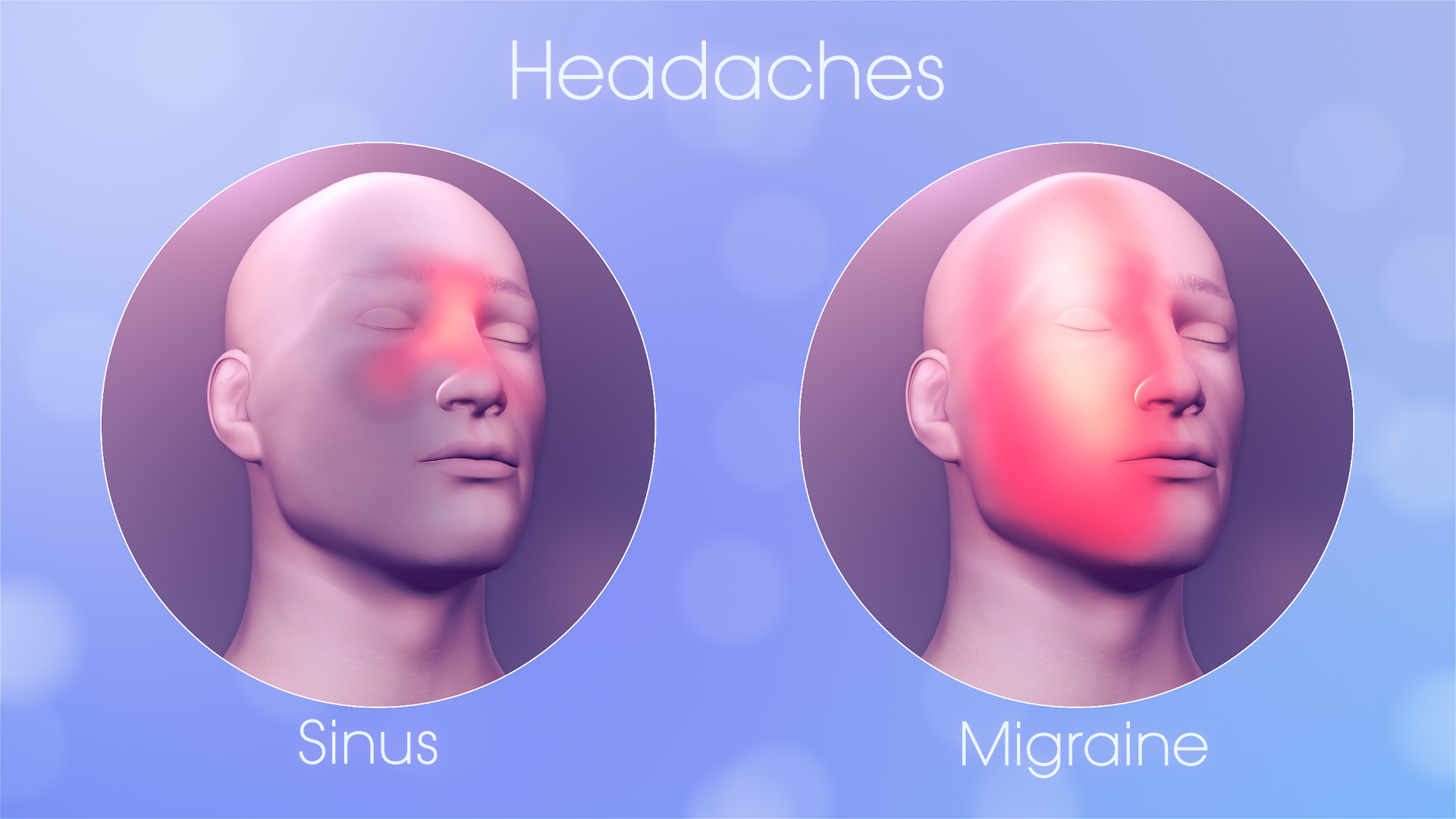What if we told you that ‘sinus headache’ is not as common as you think?
Yes.
If you suffer from frequent sinus headaches, there is a good chance that you are actually experiencing migraines!
Reasons for confusion:
- Matching symptoms
- Response to treatment
- Since the patient believes they have an infection, the antibiotic has a powerful placebo effect.
- Moreover, with time, the migraine would have gone away anyway.
Pressure in the face, a link with seasonal weather changes, dysfunctioning of autonomic nervous system such as heart rate, blood pressure, sweating, etc, are some common symptoms of both conditions. Migraine may be triggered by other illnesses that affect the head or neck, for example a dental problem or respiratory or sinus congestion. In other words, sinus can even happen to migraine sufferers and may lead to increased migraine activity in them, often causing misdiagnosis.
Consider a patient has a headache involving pressure sensation in the face, and calls their primary care physician thinking a sinus infection is causing the symptoms. The physician then prescribes antibiotics to treat this assumed sinus infection. The patient feels better after taking these medications, and believes that the infection is cured.
However, the reality of the situation is that antibiotics can be effective for the treatment of sinus issues as well as migraines for two reasons:
Unfortunately, this cycle of antibiotics for the treatment of a migraine posing as a sinus infection can go on for years. Conversely, if a sinus headache responds to a migraine-specific treatment, the sinus headache is diagnosed as migraine. This incorrect diagnosis can even skew a patient’s family history because migraine is a genetic disorder unlike sinus.

Understanding further...
Migraine runs in families and can come on suddenly, triggered by bright lights, loud sounds or stress, causing nausea and vomiting. The pain may be lopsided or diffused, limited to the front, top, or back of the head, and may often reach into the neck. It may hurt in the face area as well.
Sinus headache, called ‘rhinosinusitis’, is rare and occurs as a consequence of viral/bacterial infection. The infection is characterised by thick, discolored mucus-like nasal discharge, facial pain or pressure and commonly fever. Ideally the facial pain and headache should resolve after remission of infection. But if the pain persists, the diagnosis should be reconsidered.
The typical points of sinus pain are- the cheeks (maxillary sinus), bridge of the nose (ethmoid sinus), or above the eyes (frontal sinus). Pain at the top or back of the head (sphenoid sinus) may also occur rarely. In fact, the pain itself tends to differ between migraine and sinus headache. Migraine pain is usually described as pulsing or throbbing, while sinus headache is more like a buildup of pressure.
Sinus headaches are treated with decongestants, pain relievers that irrigate the nasal passage to ease sinus pressure, and aid drainage. Antibiotics are employed later (in case of bacterial infections).
Migraine, on the other hand, cannot be treated by simply stopping it. It's also about preventing and reducing the frequency of attacks, their duration and their intensity. We’ve already discussed some useful migraine management tips with you before.
It's understandable to assume a headache accompanied with stuffy nose and watery eyes to be a sinus headache, however, it’s important to know that all forms of pain, particularly in the forehead, reflexively cause watery eyes, stuffiness, and runny nose. So if you've got a headache that comes and goes, it should be considered migraine until proven otherwise.








